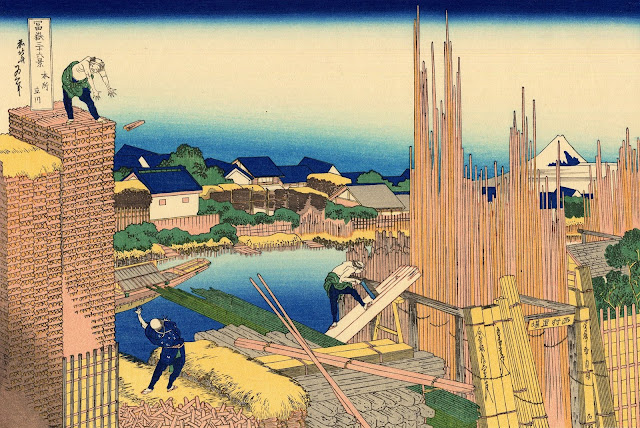Fujiyama / 富士山 (3, 776 m -12,389 ft) Japan
In Mount Fuji with clouds 1950, photo
The mountain
The legendary Mount Fuji or Fujiyama (富士山) is located on Honshu Island and is the highest mountain peak in Japan at 3,776.24 m (12,389 ft). Several names are attributed to it: "Fuji-san", "Fujiyama" or, redundantly, "Mt. Fujiyama". Usually Japanese speakers refer to the mountain as "Fuji-san". The other Japanese names for Mount Fuji, have become obsolete or poetic like: Fuji-no-Yama (ふじの山 - The Mountain of Fuji), Fuji-no-Takane (ふじの高嶺- The High Peak of Fuji), Fuyō-hō (芙蓉峰 - The Lotus Peak), and Fugaku (富岳/富嶽), created by combining the first character of 富士, Fuji, and 岳, mountain.
Mount Fuji is an active stratovolcano that last erupted in 1707–08. Mount Fuji lies about 100 kilometres (60 mi) south-west of Tokyo, and can be seen from there on a clear day.
Mount Fuji's exceptionally symmetrical cone, which is snow-capped several months a year, is a well-known symbol of Japan and it is frequently depicted in art and photographs, as well as visited by sightseers and climbers.
Mount Fuji is one of Japan's Three Holy Mountains (三霊山) along with Mount Tate and Mount Haku. It is also a Special Place of Scenic Beauty and one of Japan's Historic Sites.
It was added to the World Heritage List as a Cultural Site on June 22, 2013. As per UNESCO, Mount Fuji has “inspired artists and poets and been the object of pilgrimage for centuries”. UNESCO recognizes 25 sites of cultural interest within the Mt. Fuji locality. These 25 locations include the mountain itself, Fujisan Hongū Sengen Shrine and six other Sengen shrines, two lodging houses, Lake Yamanaka, Lake Kawaguchi, the eight Oshino Hakkai hot springs, two lava tree molds, the remains of the Fuji-kō cult in the Hitoana cave, Shiraito Falls, and Miho no Matsubara pine tree grove; while on the low alps of Mount Fuji lies the Taisekiji temple complex, where the central base headquarters of Nichiren Shoshu Buddhism is located.
The artist
Kōyō Okada (岡 田紅陽) is a Japanese photographer, winner of the 1954 edition of the Japan Photography Society Award. Koyo Okada devoted his whole life to photographing Mt.Fuji.
He used to be photographing Mt.Fuji, wearing wadded kimono from his favorite Japanese style hotel, and neighbors called him ‘Koyo-san’ with intimacy. He was born in Uonuma of Nigata prefecture, and his great-grandfather, grandfather, and father were artists. He got interested in taking photos when he was in Waseda University, and he met Mt.Fuji seen from Oshino village when he was 21 years old. Since that time, the relationship with Mt.Fuji of more than 50 years had started. The life of Japanese people of those days with Mt.Fuji and the rural scenery at the foot of Mt.Fuji, which are in the picture, reminds us of the time and nature which Japan is losing. You should absolutely go to see his photos.
%20-%20Mount%20Fuji,.jpg)

















